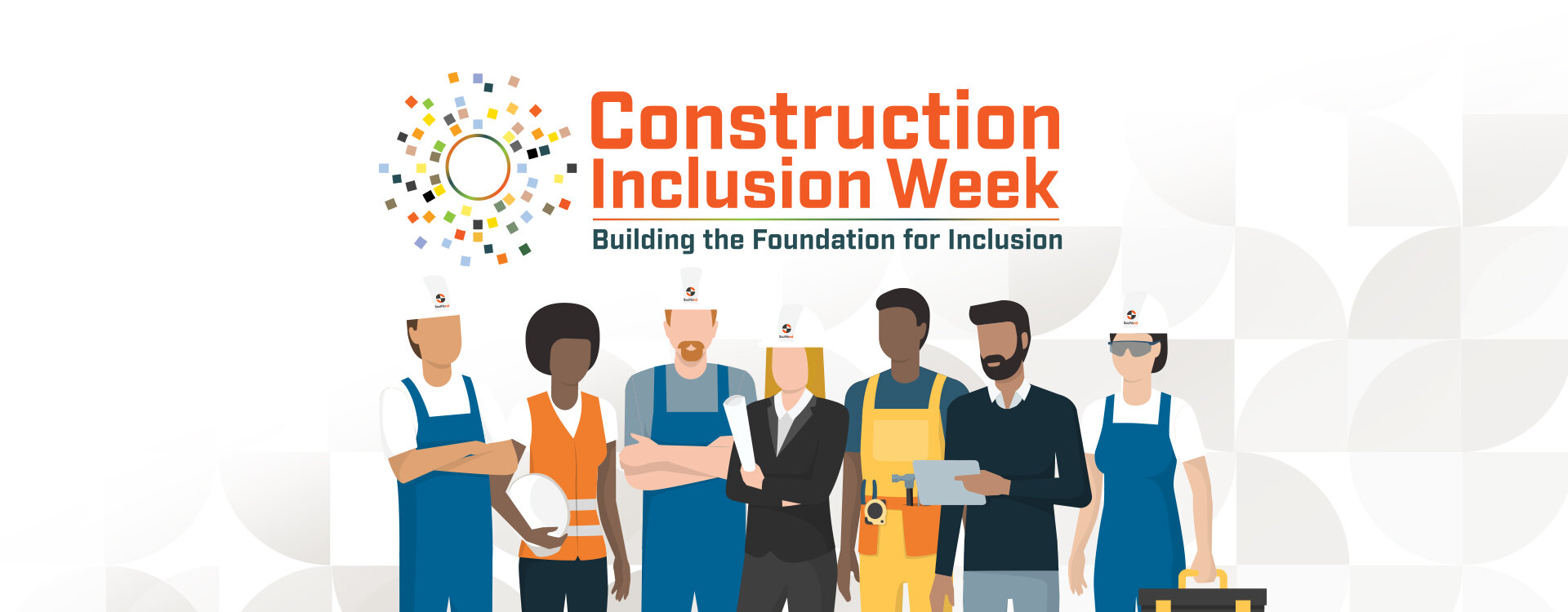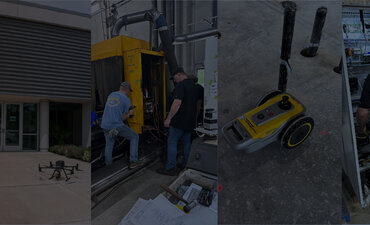
A more diverse, equitable, and inclusive AEC industry looks collaborative, supportive, and accepting of different viewpoints and voices.
Diversity, equity, and inclusion: three words that are ringing strongly and driving changes across many industries and companies. As diversity, equity, and inclusion (DE&I) become focal points in multiple companies' operations, strategy plans, and culture and recruiting campaigns, the AEC industry has started to make its mark by highlighting their own DE&I efforts. Numerous companies, including Southland Industries, are committed to taking deliberate and intentional actions to drive the industry forward.
Created by a group of general contractors in 2020, Construction Inclusion Week is kicking off its inaugural week in October 2021. In recognition and celebration, Southland's Lisa Starr, Chief Human Resources Officer, stopped by The Big Room to share her thoughts and provide insight on Construction Inclusion Week and DE&I.
Why is DE&I more important than ever in the AEC industry?
As the industry evolves, collaboration has become more of a necessity in everyday operations and is a key component for success. Collaboration — as a process — requires an inclusive environment where everyone's voices are valued and heard. This includes fully utilizing our talented team and encouraging those who are collaborating to respect and value different viewpoints.
Secondly, in terms of the available talent pool, the country has become more diverse over time. In order to staff a competitive workforce, companies need to be attractive to all potential candidates. Additionally, our customers are also becoming more diverse and expect to work with partners who seek out the best teams through a diverse workforce where multiple views and ideas can flourish.
Getting started is often one of the hardest parts of building new strategies and policies for change. What actions can companies take to get started with building an inclusive culture and a DE&I strategy?
Identifying the starting point or the baseline of where you are at is crucial. Companies should first conduct a review of their policies, practices, and culture to see if it supports inclusion, collaboration, and diversity.
To ignite the conversation and generate momentum, ask questions like: are we inclusive?, is inclusivity a focus in outreach and recruiting campaigns?, are our actions generating an inclusive culture?, and do we have a learning space to cultivate diversity and inclusion.
After the baseline has been determined, set a vision of what you want to achieve. Finding ways to encourage and support inclusivity and staying open to ideas and different voices is essential. Leadership plays a prime role in taking charge of communicating the efforts to the overall organization while providing support and encouragement.
It is critical to create a strong foundation to build from for a lasting approach and to make real progress. For any strategy to be successful, it needs to be sustainable, which means taking on challenges you can achieve in a reasonable period of time and then successively building from them. Ultimately, a DE&I strategy must be embedded in the fabric of the organization, helping to build a foundation for success and positively impacting how you do business.
How did Southland start integrating DE&I into its company practices and what are some of the key points that you've focused on regarding the broader strategy?
By virtue of the type of work Southland does, our culture is collaborative. We also have a flat organization that promotes an inclusive environment. When constructing our strategy, both of these things constitute a strong foundation and 'a lot of good clay' to work with, which helps us further weave a DE&I view into current processes and practices in the organization.
Initially, working from a great starting point, we wanted input from a diverse set of voices in the organization, so we asked: "how do you listen to all of the voices in the organization?" Then, we utilized leadership roundtables, employee surveys, and various channels to enable our ability to listen and capture feedback.
At that time, we also felt that we needed to meet our team members where they were 'at.' Everyone is at a different knowledge level about terms, what they mean, and what we are trying to achieve as opposed to what you see in the news regarding the topic. As a result, we created training for our office and jobsite employees. This included building a general education DE&I module and using industry specific external resources to enable all of our employees to begin the journey and explore. I anticipate we will deliver additional training over the next year.
On the jobsite, we talk about inclusion and belonging, which ties to psychological safety. If you don't feel comfortable or feel that your coworker has your back, it can impact your work and promote distractions that may not be optimal for safety.
Additionally, we are implementing expanded outreach in recruiting, including the trades, collaboration with local partnerships, and are encouraging people through communication and resources to be active in and a part of our DE&I journey.
Within the greater industry, we have invested in external resources and partnerships. In recent support of this, CEO Ted Lynch took the Culture of Care Pledge, sponsored by AGC, and we joined Catalyst as a proud sponsor of their work.
What does a more diverse, equitable, and inclusive AEC industry look like to you?
A more diverse, equitable, and inclusive AEC industry looks collaborative, supportive, and accepting of different viewpoints and voices. The processes that support people in their career are widely accepted and provide what they need in their lifecycle journey without any barriers, enabling them to pursue a fulfilling career.
A lot of these DE&I actions will be visible through recruiting activities and therefore the AEC industry will have a broadened pipeline of talent with a diverse population. Overall, it looks like an industry where we have the best talent that's out there, and when that talent heads to work each day, they feel supported and can be themselves while solving building challenges for our customers.
What do you think the main impacts from the inaugural Construction Inclusion Week will be?
This is a really exciting time for the industry and we're fostering a much more welcoming environment. The inaugural Construction Inclusion Week will drive awareness, making people aware of the breadth and multiple facets of DE&I in relation to the fabric of their own organization.
Some companies are further along on their journey with their plans and other companies may just be starting on their journey. I believe that for all who take sincere, earnest efforts, they will make the change and progress needed to keep the industry vibrant. Construction Inclusion Week can help facilitate the awareness within and outside of the industry to encourage all people that this can be a launching point for building very successful careers.
Chief Human Resources Officer
As Chief Human Resources Officer for Southland Industries, Lisa Starr oversees the overall strategy, design, and implementation of our human resources plans, processes, and practices. She also supports the execution of Southland's strategic goals across all business lines in collaboration with the company's executive leadership team.
Read Full Bio



